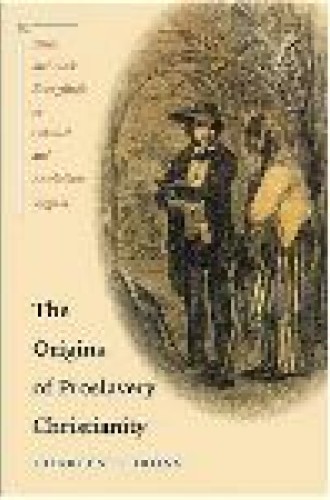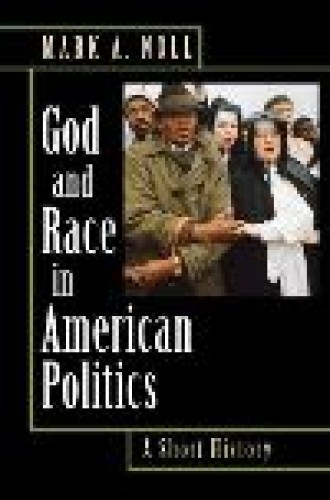Devout racism
In the early 1900s an Englishman made his way across the American South. William Archer ventured by train and on horseback, observing the region’s peculiar folkways. He met with leading men, Booker T. Washington and W. E. B. Du Bois among them, and visited historic sites and thriving New South cities. For Archer the South was at once quaint, backward, hopeful, beautiful and grotesque. Relations between blacks and whites preoccupied him. In that regard, he was like so many other nonsouthern authors of Dixie travel literature—William Bartram, Henry Benjamin Whipple, Frederick Law Olmstead, V. S. Naipaul. But timing is everything.
Archer journeyed through the countryside not long after many southern states rewrote their constitutions, systematically excluding blacks from the electorate. Southern law enforcement officers could easily arrest blacks for vagrancy or some other trumped-up charge. The penalty for the accused: working hard labor in a gruesome prison camp, a fate that one historian calls “worse than slavery.” In these years vigilante justice instilled fear in the hearts of millions as the lynching of black southerners reached an all-time high.
Archer didn’t doubt that southerners, black and white, were intensely devout. The region was one of the most “sincerely religious” places he had ever visited. Yet, he sarcastically observed, most white southern Christians “would scarce be at ease in heaven unless they enter it, like a southern railway station, through a gate marked ‘for whites.’”
The illogic of Jim Crow justice still haunts America. The longstanding presence of racism in the church is hardly believable to some, a brutal fact to others. Looking at the sweep of American history, it’s impossible to dissociate deep-seated racism from America’s Christian churches.
Two recent books examine race and American Christianity. The authors ably trace how Americans—enslaved and free, northern and southern—have struggled with religion and race over the ages. Mark Noll’s insightful God and Race in American Politics is a sweeping account of the subject from the 1820s to the early 21st century. In contrast, Charles Irons focuses on the fierce debates about slavery and Christianity that dominated the attention of Virginians from the late 18th century to the eve of the Civil War in his carefully researched and well-written The Origins of Proslavery Christianity.
Noll’s short volume, based on a series of lectures he delivered at Princeton University, reads like a learned discourse on a topic as broad as it is deep. Irons’s Origins is rich with detail and represents meticulous research. Put together, the two books present an ideal macro and micro view of the messy business of politics, Christianity and race in the U.S. Through the centuries Americans have always had to rethink their faith in light of new experience. Both of these books show many ways that church leaders and laypeople have grappled with the possibility of equality and the cold fact of oppression.
Noll sets out to treat “broad and weighty subjects” in a brief narrative—something, he writes, akin to drawing a cartoon instead of writing real history. Yet this work is just the sort of introduction that those unfamiliar with the contours of politics, race and religion need.
Three great transformations in American history, Noll observes, involve “potent combinations of race and religion” that drove American politics. Those three key changes, serving as the hook and backbone for the book, center on antebellum slavery, the late-19th-century rejection of equal rights, and the period from the 1950s to the present when the battle for civil rights was finally won. Concerning the struggle for civil rights, Noll makes a powerful argument. While acknowledging the importance of the courts and community organizing, he aptly points out that religion was the indispensable foundation of the civil rights movement. The conviction that God was on the side of the black freedom struggle was powerful.
Throughout the book Noll argues that the “Calvinist tradition” has been responsible for both great achievements and many nettlesome problems. A reliance on the Bible and an appreciation of the effects of sin have both liberated and oppressed. Noll’s treatment of Calvinism often begs a question. If every major player fits within the Calvinist tradition, doesn’t Calvinism lose some of its explanatory heft? (And I can hear Timothy Smith shouting from the grave, “Why not the Arminian tradition?”) Still, some Calvinist features are clearly visible here. The appeal to scripture and an unshakable biblicism, on both sides of any given debate, have been ubiquitous.
Seldom was the intensity of any Bible battle so white hot as in the 1850s and 1860s. “Both northerners and southerners,” Noll remarks, “hard-line abolitionists along with hard-line slavery advocates and many who vacillated in between, almost all had looked for a word from God to resolve their dilemmas about slavery.” They reached for their Bibles as they grabbed their guns.
Charles Irons examines how whites and blacks in Virginia made sense of scripture. He culled through a mountain of denominational newspapers, memoirs, court records and church documents to craft his narrative. From such sources he learned that black-white relations and ideas about slave missions changed drastically from the colonial era to the 19th century.
For years a number of white slave owners feared that conversion would spoil slaves as laborers and make them yearn for freedom. But enslaved people pressed their owners for religious recognition as well as freedom. Those who desired admittance to Virginia’s white churches “altered evangelical practices,” Irons writes.
He finds similar reciprocation from the colonial era up to the eve of the Civil War. Blacks were not passive victims. Indeed, numerous black converts helped make Baptist and Methodist churches bulwarks of the new evangelicalism. With the advent of truly biracial churches in the post–Revolutionary War years, white evangelicals began to consider slavery a theological problem. Though white churchpeople and civic leaders failed to act against slavery, neither could they ignore it.
One solution for white evangelicals was African colonization, which “seemed to offer the perfect opportunity to act on their consciences without disrupting their local congregations.” Irons recounts the many ways that black and white evangelicals jumped on the colonization bandwagon. Black missionaries, Lott Cary among them, were the fruit of evangelical fervor. White patrons exemplified Christian paternalism.
Nat Turner’s bloody revolt in 1831 marks a turning point in Irons’s narrative. Turner had been a folk preacher, and for white evangelicals his rebellion demonstrated the perils of unsupervised black Christianity. Far from souring whites on slave evangelism, though, the episode made whites all the more focused on preaching a carefully controlled gospel to blacks. “Lawmakers and pastors snatched formal spiritual authority from the hands of African-American clergymen,” Irons explains, “and prescribed for all Virginians a brand of proslavery Christianity.” Virginia’s white ministers delivered proslavery sermons and wrote guidebooks describing how one might reach unconverted bondspeople.
So convinced were they of the righteousness of their mission, white evangelicals were shocked when slaves abandoned plantations during the Civil War and set up their own churches in the postbellum years. That exodus exposed the wishful thinking that so deluded white southern evangelicals.
Irons ends with a striking point that deserves further exploration. Once the ties were severed between white and black evangelicals, whites “unleashed a torrent of violence on the black men and women whom they no longer recognized as their neighbors.” Here and elsewhere Irons makes a complex era in U.S. history come alive with vivid detail.
Like all skilled historians, Irons and Noll expertly track change over time. C. Vann Woodward did the same in his classic The Strange Career of Jim Crow (1955), a work that showed how a new, crippling racism developed in the post–Civil War years. Race was not an eternal, changeless force, asserted Wood ward. History is contingent. Its course is not set. Good history can raise consciousness and inspire activism. Martin Luther King Jr. called Wood ward’s book the “historical Bible of the civil rights movement.” Like Woodward, Irons and Noll reveal the changing dynamics of race, politics and religion. They show how groups and individuals adapt to new currents and reevaluate and sometimes reify tradition.
Irons and Noll prompt readers to think historically about the hope of racial reconciliation and the tragedy of church-sanctioned race hatred. It’s almost impossible to read these two books and not ponder what might have been or what could be in store for America’s future.






